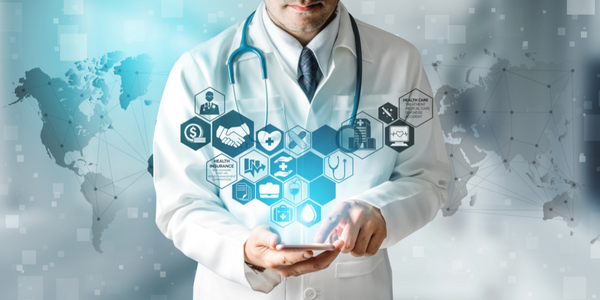公司规模
Large Corporate
地区
- Europe
国家
- Norway
产品
- Dundas BI
技术栈
- Microsoft SQL Server Analysis Services OLAP
实施规模
- Enterprise-wide Deployment
影响指标
- Productivity Improvements
- Customer Satisfaction
技术
- 分析与建模 - 数据即服务
适用行业
- 医疗保健和医院
适用功能
- 商业运营
服务
- 系统集成
关于客户
挪威卫生局是挪威卫生和护理服务部下属机构。它负责监测影响公共卫生的状况并确定整个挪威的公共卫生趋势。卫生局还负责根据收集的数据实施行动计划和活动,以改善公共卫生。卫生局的目标群体是挪威公民(超过 500 万)以及医疗保健行业专业人士、媒体和研究团体。卫生局的主要关注对象是那些需要有关健康、健康权利、护理服务以及从事提供健康和护理服务的人。因此,卫生局的三大核心价值观之一是开放性。卫生局努力使其工作具有清晰、透明、开放流程和清晰沟通的特点,以更好地服务于其目标群体。
挑战
挪威卫生局面临着以易于理解的格式向公众提供健康数据的挑战。之前,数据是通过静态 PDF 文件和报告提供的,自助服务功能有限,数据大多以表格形式显示。这使得公民难以使用数据,因为通过表格显示很难理解数据,而通过视觉效果来突出趋势和模式则很难理解。用户体验并不吸引人,数据是静态的,阻碍了用户的进一步探索。由于该过程的技术性质,卫生局本身在发布新数据集和确保出版物是最新的方面也受到限制。卫生局需要一个现代化的解决方案,以便为用户提供更好的方式,让他们能够探索、创作新内容和使用数据,而无需太多 IT 参与。
解决方案
该局开始使用 Dundas BI 平台构建新的可视化报告,主要是交互式仪表板的形式。然后,这些报告被嵌入卫生局的公共门户,允许整个挪威人口(以及世界其他地区)访问这些报告,并开始以自助服务的方式与数据交互。这使该局能够更好地可视化基准和变化,以找到服务水平与常态不同的领域。因此,这些报告成为该局门户的一个组成部分。简单的集成 API 和其他内置管理功能(例如匿名用户登录)也支持集成,确保无需进行任何管理维护。Dundas BI 的平台基于 HTML5 技术构建,支持移动功能(例如长按、捏合缩放和智能调整大小),用于使所有用户都可以通过任何设备(包括平板电脑和其他移动设备)访问该解决方案。
运营影响

Case Study missing?
Start adding your own!
Register with your work email and create a new case study profile for your business.
相关案例.

Case Study
Hospital Inventory Management
The hospital supply chain team is responsible for ensuring that the right medical supplies are readily available to clinicians when and where needed, and to do so in the most efficient manner possible. However, many of the systems and processes in use at the cancer center for supply chain management were not best suited to support these goals. Barcoding technology, a commonly used method for inventory management of medical supplies, is labor intensive, time consuming, does not provide real-time visibility into inventory levels and can be prone to error. Consequently, the lack of accurate and real-time visibility into inventory levels across multiple supply rooms in multiple hospital facilities creates additional inefficiency in the system causing over-ordering, hoarding, and wasted supplies. Other sources of waste and cost were also identified as candidates for improvement. Existing systems and processes did not provide adequate security for high-cost inventory within the hospital, which was another driver of cost. A lack of visibility into expiration dates for supplies resulted in supplies being wasted due to past expiry dates. Storage of supplies was also a key consideration given the location of the cancer center’s facilities in a dense urban setting, where space is always at a premium. In order to address the challenges outlined above, the hospital sought a solution that would provide real-time inventory information with high levels of accuracy, reduce the level of manual effort required and enable data driven decision making to ensure that the right supplies were readily available to clinicians in the right location at the right time.

Case Study
Gas Pipeline Monitoring System for Hospitals
This system integrator focuses on providing centralized gas pipeline monitoring systems for hospitals. The service they provide makes it possible for hospitals to reduce both maintenance and labor costs. Since hospitals may not have an existing network suitable for this type of system, GPRS communication provides an easy and ready-to-use solution for remote, distributed monitoring systems System Requirements - GPRS communication - Seamless connection with SCADA software - Simple, front-end control capability - Expandable I/O channels - Combine AI, DI, and DO channels

Case Study
Driving Digital Transformations for Vitro Diagnostic Medical Devices
Diagnostic devices play a vital role in helping to improve healthcare delivery. In fact, an estimated 60 percent of the world’s medical decisions are made with support from in vitrodiagnostics (IVD) solutions, such as those provided by Roche Diagnostics, an industry leader. As the demand for medical diagnostic services grows rapidly in hospitals and clinics across China, so does the market for IVD solutions. In addition, the typically high cost of these diagnostic devices means that comprehensive post-sales services are needed. Wanteed to improve three portions of thr IVD:1. Remotely monitor and manage IVD devices as fixed assets.2. Optimizing device availability with predictive maintenance.3. Recommending the best IVD solution for a customer’s needs.

Case Study
HaemoCloud Global Blood Management System
1) Deliver a connected digital product system to protect and increase the differentiated value of Haemonetics blood and plasma solutions. 2) Improve patient outcomes by increasing the efficiency of blood supply flows. 3) Navigate and satisfy a complex web of global regulatory compliance requirements. 4) Reduce costly and labor-intensive maintenance procedures.

Case Study
Cloud-based healthcare solution for Royal Philips
Royal Philips wanted to launch its cloud-based healthcare solution HealthSuite Digital Platform in China to deliver services to help cope with challenges related to urbanization and population growth. Philips wanted to achieve this goal by combining mobile, cloud computing and big data technologies. To bring this platform and product to market, Philips required cloud computing and local technical service capabilities in China, in addition to a flexible IT infrastructure that could handle user requests.








